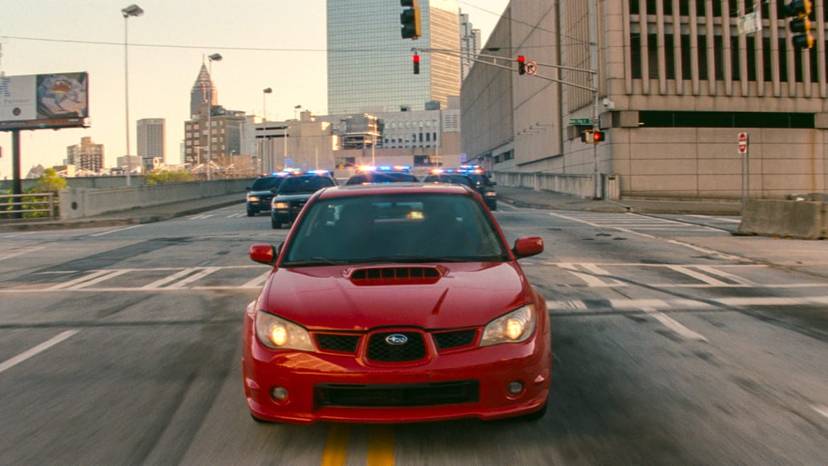
Vehicle Overview
Subaru’s smallest model comes in sedan and wagon forms, with high-performance Impreza WRX editions in each body style. All Impreza models have been restyled for the 2006 model year. A new front-end features smoke-tinted headlights, a mesh grille, a new hood and modified fenders. Imprezas with non-turbocharged engines get a new aluminum hood, and all models have redesigned taillamp clusters.
In the WRX, a 230-horsepower version of the turbocharged 2.5-liter horizontally opposed engine replaces last year’s 227-hp, 2.0-liter four-cylinder. The new engine features an Active Valve Control System, which promises improved performance with an automatic transmission. Output of the non-turbo engine has grown from 165 to 173 hp, courtesy of a new i-Active Valve Lift System.
The entry-level 2.5 RS has been renamed 2.5i. Side-impact airbags with head extensions are now standard in the front seats of all models. An outside temperature gauge is now included. Wagons gain cargo-area utility bars, and an air filtration system is installed in Imprezas with the non-turbo engine.
Regular Impreza models are powered by the same 2.5-liter horizontally opposed four-cylinder that’s used in the company’s larger Legacy. Imprezas are equipped with full-time all-wheel drive and an antilock braking system.
Subaru also offers the Impreza-based Outback Sport, which is listed with the Outback series in the cars.com Research section.
(Skip to details on the: Impreza WRX | Impreza WRX STi)
Exterior
Subaru says restyling for the 2006 model year is intended to reflect a new brand identity. A new three-section mesh-type grille is inspired by the Japanese company’s aircraft heritage. Sedans have revised wide-body fenders. Wagons get their own flared fender design, like on prior Impreza models.
Interior
All Imprezas seat five people. A ratchet-type height adjustment permits additional vertical movement for the driver. Imprezas include remote keyless entry, cruise control, a tilt steering wheel, a CD stereo and embroidered carpeted floormats. Wagons hold 27.9 cubic feet of cargo when the rear seatbacks are up and 61.6 cubic feet when they’re folded.
Under the Hood
Subaru’s 2.5-liter horizontally opposed four-cylinder now develops 173 hp. A five-speed-manual transmission is standard, and a four-speed automatic is optional. Subaru’s full-time all-wheel-drive system transfers power among the wheels automatically.
Safety
Antilock brakes and daytime running lights are standard. Side-impact airbags with head extensions are now installed in the front seats. Three-point seat belts are included for all five seating positions. The front seat belts have pretensioners and force limiters. �
Impreza WRX
Performance is enhanced in the WRX sedan and wagon for 2006, as the new turbocharged 2.5-liter four-cylinder develops 230 hp and 235 pounds-feet of torque. Previous WRX models used a 2.0-liter engine. A new WRX TR model combines the performance upgrades of standard WRX vehicles with the interior content and exterior trim of the 2.5i sedan to keep the price down. New WRX Limited sedans and sport wagons feature leather seating, a power moonroof, dual-mode heated front seats, heated mirrors and windshield wiper de-icing. The WRX Limited sedan adds a rear spoiler.
WRX chassis upgrades for 2006 include 17-inch wheels with all-season tires and aluminum front-suspension links. The brakes gain larger, ventilated rear discs, and the steering ratio has been quickened. Subaru has attempted to reduce noise by installing an underbody cover and increased sound insulation.
The Impreza WRX can be equipped with a five-speed-manual transmission or an optional four-speed automatic. Automatic WRX models feature Variable Torque Distribution all-wheel drive.
Noticeable WRX styling touches include slightly bulged fenders and a large air scoop that feeds cool air to the turbocharger’s intercooler. The hood is made of aluminum. WRX models have a sport-tuned suspension, standard 16-inch alloy wheels and larger front brake discs. Seat-mounted side-impact airbags are standard. A tiny turbo boost gauge sits atop the steering column.
The Impreza WRX looks the part of a hot performer and delivers the goods, too. Acceleration is strong, especially when passing or merging and the transmission is in the most helpful gear. Engine sounds and vibrations are noticeable but not bothersome.
The WRX’s taut suspension reacts appropriately by taming the bulk of bumps. Steering is quick and easy for snappy cornering, coupled with satisfying highway stability. Headroom in the front seat is abundant, but elbowroom is limited. Though backseat legroom is a bit cramped, the center position is more appealing than in most small cars. Large headrests impede over-the-shoulder visibility. Back to top�
Impreza WRX STi
Subaru took a bold performance step in the 2004 model year when it introduced the Impreza WRX STi. Equipped with an intercooled and turbocharged 2.5-liter horizontally opposed four-cylinder that produces 300 hp and 300 pounds-feet of torque, the WRX STi’s engine mates with a six-speed-manual gearbox. It’s the most powerful Subaru ever sold in North America.
A new steering rack for 2005 promised greater precision. The suspension was revised, and a new helical-type limited-slip front differential and an aero underbody cover were installed.
For 2006, a steering sensor for the Driver Controlled Center Differential Symmetrical All-Wheel Drive system is installed. A new roof vane spoiler, a revised hood scoop and daytime running lights are installed. The WRX STi features high-intensity-discharge headlights and heavy-duty Brembo all-disc brakes.
Performance tops the list of STi merits, which sends this model into close competition with the hottest Asian-brand compacts. If anything, the WRX STi is so potent that it feels out of character for a small Subaru. Back to top




























